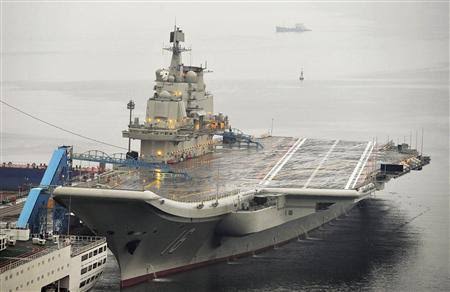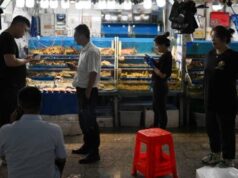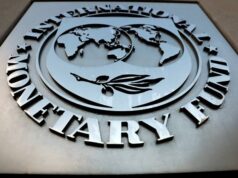Rusty Chinese Liaoning Aircraft Carrier Trying Incursions Into Japanese Waters
 Ever since the United States’ nuclear-powered aircraft carriers, USS Ronald Reagan and USS Theodore Roosevelt moved away from the West Pacific and the South China Sea, China’s aggression in the region has increased, using their rusty old aircraft carrier Liaoning.
Ever since the United States’ nuclear-powered aircraft carriers, USS Ronald Reagan and USS Theodore Roosevelt moved away from the West Pacific and the South China Sea, China’s aggression in the region has increased, using their rusty old aircraft carrier Liaoning.
According to Japanese defence officials, a rust bucket Chinese aircraft carrier named Liaoning accompanied by two Chinese guided-missile destroyers, two multi-role warships and one supply-class fast combat support ship were spotted sailing between Japan’s Okinawa and Miyakojima islands twice in the month of April.
Apart from sailing such warships in Japan’s territory, China has also been readily active near the disputed Senkaku Islands. In the longest streak since August 2016, for three consecutive days, four of Chinese vessels entered the waters of the Japanese territory chasing a Japanese fishing boat forcing the Coast Guard to send patrol vessels.
These uninhabited islands in the East China Sea are administrated by Japan however, China claims them as the Diaoyu. Being located in a strategically significant position, these islands, with a total area of just about 7 square kilometers are a matter of intense conflict between US and China in the Asia-Pacific region.
Tetsuo Kotani, professor of international relations at Japan’s Meikai University says that “If infections spread within the U.S. military and the defense industry becomes unable to provide sufficient maintenance, China may consider it a power vacuum and move to alter the status quo in the Senkaku Islands and Spratly Islands and even with Taiwan.”
It has also been reported that China has been planning to enlist the personnel of People’s Armed Police Force, a Chinese paramilitary force to take charge of managing the maritime conflicts with international ships.
Currently, these maritime disputes such as conflicts with foreign fishing ships are a responsibility of the Chinese Coast Guard, however the new revision will put this duty on the military-controlled People’s Armed Police Force.
The change, first in about 11 years, will also provide special permits to armed police members and enforce an effective unification of the Armed Police and the Coast Guards. Experts opine that these changes in law combined with the intensity of the incursions by China take forward its intent to control the South China Sea in the post-pandemic times.
“There is concern that while countries are busy occupied with the pandemic response, at a time of no U.S. aircraft carriers operational in the Pacific, China has moved its carrier from the East China Sea to the Pacific and then on to the South China Sea,”Professor Kotani says
However if Japan calls the bluff then China may have a very hard time protecting its so called Carrier Battle Group. Even Vietnam should quickly arm its patrol ships with Indian BRAHMOS missiles. It will scare the Chinese all the way to Beijing.
It is estimated by the United Nations Conference on Trade and Development (UNCTAD) that the South China Sea carries about one-third of the global shipping trade. About US$3.37 trillion worth of global trade passes through the South China Sea annually.
China, being the second-largest economy in the world after the US, with over 60 per cent of its trade carried by sea, Beijing’s economic security is closely tied to the South China Sea.
Raising alarm bells over its maritime activities, the United States commander of the U.S. Pacific Fleet has said that “The Chinese Communist Party must end its pattern of bullying Southeast Asians out of offshore oil, gas and fisheries,”




